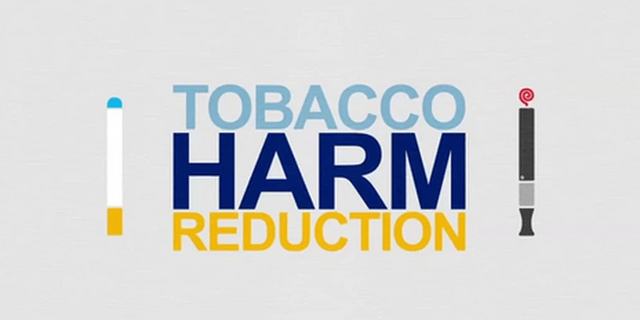In many countries, cigarette packs now come with both graphic and text health warnings to smokers on the health risks associated with their consumption. However, have these warnings deterred smoking?
For people who smoke, quitting remains the best option to avoid the health risks associated with tobacco consumption and non-smokers are advised to never pick up the habit.
The health risks that smokers face come from the many toxic substances contained in cigarette smoke when the cigarettes are burned and not the nicotine that they crave from the cigarette. This is why the scientist Michael Russell famously quoted that “people smoke for nicotine but die from the tar.”
An understanding of the need to reduce the health impact of inhaling the noxious fumes contained in burning tobacco and the pragmatic acceptance of providing reduced risk alternatives for those who cannot quit are some of the raisons d’être for the concept of tobacco harm reduction (THR).
Science has also continued to lend credence to THR as an effective means of reducing the health impact of tobacco consumption and several countries now have science-backed policies for the regulation of reduced risks or alternative tobacco products.
In October 2021, 100 specialists in nicotine science, policy and practice came together to call on the 182 parties (countries) to the Framework Convention on Tobacco Control (FCTC) of the World Health Organisation (WHO) to take a more positive stance on tobacco harm reduction. The letter which was a push back against WHO’s drive for the prohibition or excessive regulation and taxation of vaping products, heated and smokeless tobacco products, was signed by the 100 experts as reported by The Counterfactual by Clive Bates.
While developing and less developed economies seem more aligned with this WHO stand, developed economies have taken the science-led approach. For example, the United States of America’s (USA) food and drug administration (FDA) has licensed some alternative products as “modified risk tobacco products” in acceptance of the science and empirical evidence of their efficacy. This science-based approach to THR, is a public health strategy to reduce the health impact of consuming combustible tobacco products.
In the United Kingdom, the National Institute for Health and Care Excellence (NICE), which issues evidence-based guidance on the most effective methods of prevention, diagnosis and treatment of diseases and ill health, has since published a guidance on tobacco harm reduction.
The guidance supports the use of licensed nicotine containing products (NCPs) to help smokers not currently able to quit to switch to a less harmful option but instructively recognizes that quitting smoking is always the best option for smokers. As a public health strategy, in December 2021, the Daily Mail published reports from the Office of National Statistics that showed smoking rates in Britain dropped by 1.3%, from 15.8% in 2019 to 14.5% in 2020.
The introduction of alternative products and acceptance of THR have also driven down smoking rates in Japan by up to 34% as reported by Frost & Sullivan in a December 2020 report.
The Canadian Public Health Association also in recognition of the efficacy of THR in 2018 issued statements that acknowledge that alternative nicotine delivery products are less risky than combustible tobacco.
Health Canada has issued science-backed statements such as “Completely replacing cigarette smoking with vaping will reduce your exposure to harmful chemicals” among several others to drive the adoption of alternative products by smokers.
In New Zealand, the ministry of health launched a website called Vaping Facts to educate citizens on the facts about vaping with the objective to help smokers quit. The website encourages smokers to vape as a means to quit and has widely published content that indicates that vaping is less risky than smoking.
In Ghana however and across the West and Central Africa region, the knowledge and acceptance of tobacco harm reduction as a public health strategy is remarkably low.
If Ghana opts for a rigorous science-based approach to the adoption of THR and proceeds to foster an environment where proper knowledge of the health benefits of switching to reduced-risk alternatives is consciously and strategically made available to current smokers, the country will invariably experience a drop in smoking rates.
The logic holds true that so long as the alternative products from THR separate tobacco consumers from the source of risk, then they not only reduce the risk of harm but also reduce the smoking rates.
****
Lanre Odusile is a public health communication specialist
Latest Stories
-
Saminu Abdul Rasheed smashes national record again with 9.84s sprint in Georgia
2 hours -
Blekusu Coastal project: We’re reclaiming our coastlines – Housing Minister
5 hours -
Pricey plantains push Ghana’s market sellers to diversify
5 hours -
Full list: NPP delegates approve 54 reform motions, reject proposals on youth age, election supervision
6 hours -
WAFCON 2024: Cynthia made it easy – Chantelle hails goalkeeper after penalty saves
6 hours -
Cyber Security Authority boss suspended over use of military bodyguard
6 hours -
WAFCON 2024: I want to make history – Grace Asantewaa dreams of lifting the trophy
6 hours -
Afenyo-Markin accuses NDC of rebranding and claiming credit for NPP projects
6 hours -
2024 WAFCON: Grace Asantewa shines as Black Queens reach semis
6 hours -
WAFCON 2024: Ghana beat Algeria 4-2 on penalties to book semi-final spot for the first time since 2016
6 hours -
NPP Delegates reject motion to shift polling station selection oversight to regional committees
6 hours -
2024 WAFCON: Black Queens set up semifinal clash with hosts Morocco
6 hours -
Dr. Amuasi champions healthy sustainable socio-ecological systems thinking in Lancet One Health Commission Report
6 hours -
Without unity, we’re just individuals with ambition – Afenyo-Markin
7 hours -
Rebecca Tweneboah Darko: Scattered thoughts; Scary times
7 hours

